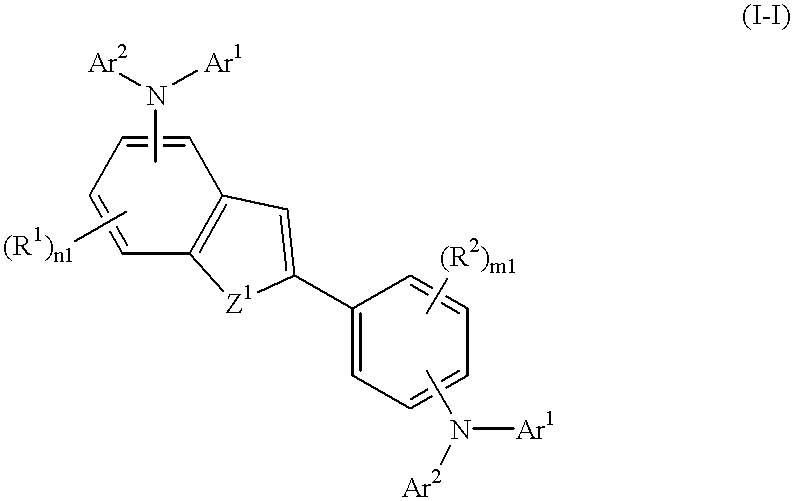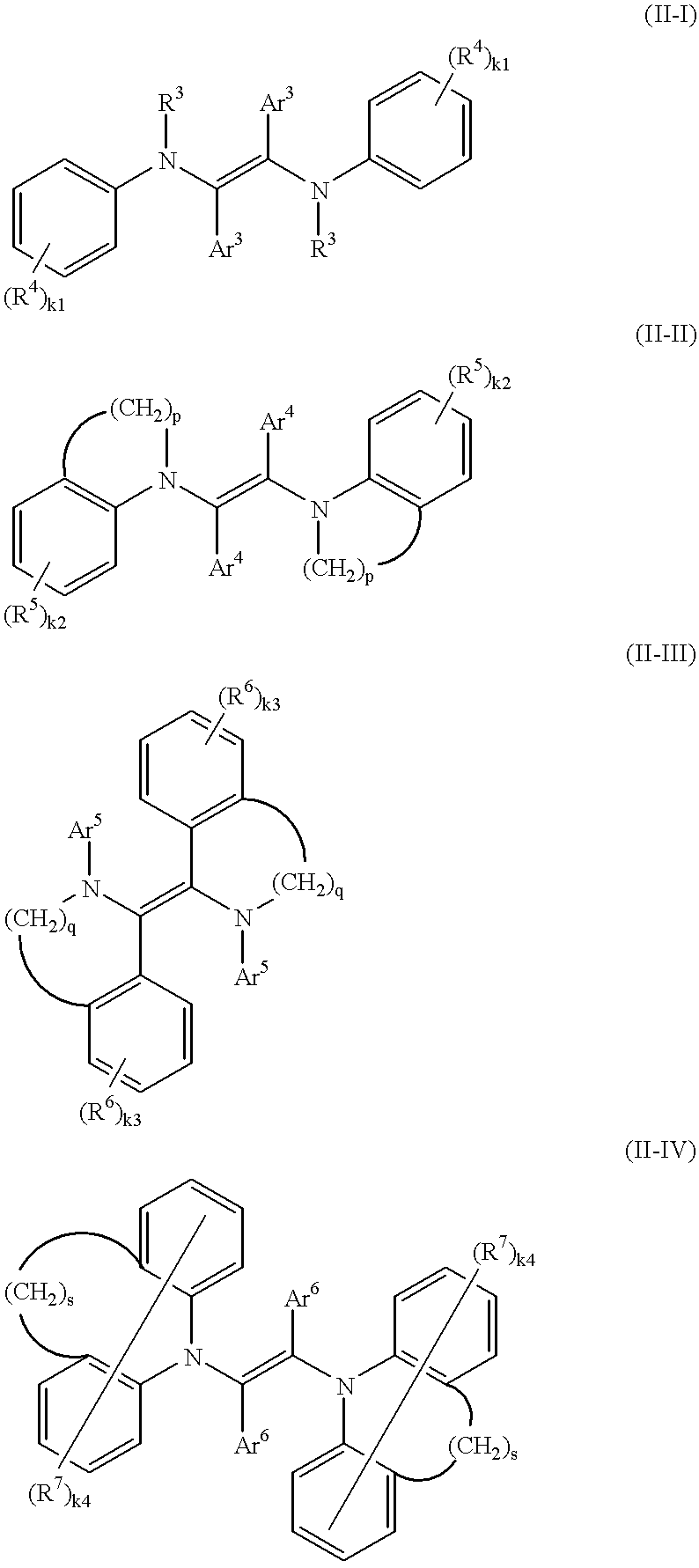Crystalline oxotitanylphthalocyanine and electrophotographic photoreceptor using the same
a technology of phthalocyanine and phthalocyanine, which is applied in the direction of electrographic process, corona discharge, instruments, etc., can solve the problems of low durability, low sensitivity of the photosensitive layer formed by dispersing zno in the binder resin, and the inability of the photosensitive layer of the photosensitive layer to provide stable sensitivity
- Summary
- Abstract
- Description
- Claims
- Application Information
AI Technical Summary
Problems solved by technology
Method used
Image
Examples
production example 2
The oxotitanylphthalocyanine intermediate crystal of Y type obtained during Production Example 1, polyvinyl butyral (Essrec BL-1 produced by Sekisui Chemical Co., Ltd.) and a vinyl chloride-vinyl acetate copolymer were mixed with methyl ethyl ketone, and subjected to a milling treatment along with glass beads having a diameter of 2 mm in a paint conditioner apparatus, followed by drying, to obtain crystal of the invention.
The crystal exhibited an X-ray diffraction spectrum shown in FIG. 7. It was understood that the crystal was crystalline oxotitanylphthalocyanine of the invention having, in the X-ray diffraction spectrum, the maximum peak as a peak bundle formed by overlapping peaks at Bragg angles (2.theta..+-.0.2.degree.) of 9.4.degree. and 9.6.degree., peaks at 7.3.degree., 9.4.degree., 9.6.degree., 11.6.degree., 13.3.degree., 17.9.degree., 24.1.degree. and 27.2.degree., and an aggregate of peaks at from 14.1.degree. to 14.9.degree., which could not be separated to individual pe...
production example 3
The oxotitanylphthalocyanine intermediate crystal of Y type obtained during Production Example 1, polyvinyl butyral (Essrec BL-1 produced by Sekisui Chemical Co., Ltd.) and a vinyl chloride-vinyl acetate copolymer (Essrec M-1 produced by Sekisui Chemical Co., Ltd.) were mixed with methyl ethyl ketone, and subjected to a milling treatment along with glass beads having a diameter of 2 mm in a paint conditioner apparatus, followed by drying, to obtain crystal of the invention.
The crystal exhibited an X-ray diffraction spectrum shown in FIG. 8. It was understood that the crystal was crystalline oxotitanylphthalocyanine of the invention having, in the X-ray diffraction spectrum, the maximum peak as a peak bundle formed by overlapping peaks at Bragg angles (2.theta..+-.0.2.degree.) of 9.4.degree. and 9.6.degree., peaks at 7.3.degree., 9.4.degree., 9.6.degree., 11.6.degree., 13.3.degree., 17.9.degree., 24.1.degree. and 27.2.degree., an aggregate of peaks at from 14.1.degree. to 14.9.degree...
example 1
A polyester film having a vapor deposition aluminum film was used as a conductive support. Titanium oxide and copolymer nylon (CM8000 produced by Toray Corp.) were dissolved in a mixed solvent comprising methyl alcohol and dichloroethane to prepare a coating composition for forming an interlayer, which was then coated on the conductive support, followed by drying, to form an interlayer having a film thickness of 1 .mu.m.
1 part by weight of the crystalline oxotitanylphthalocyanine of the invention produced in Production Example 1 and 1 part by weight of a polyvinyl butyral resin (Essrec BL-1 produced by Sekisui Chemical Co., Ltd.) were mixed with 70 parts by weight of methyl ethyl ketone, and subjected to a dispersion treatment along with glass beads having a diameter of 2 mm in the same paint conditioner apparatus (produced by Redlevel Corp.) to prepare a coating composition for a charge generating layer, which was then coated on the interlayer, followed by drying, to form a charge ...
PUM
| Property | Measurement | Unit |
|---|---|---|
| Fraction | aaaaa | aaaaa |
| Angle | aaaaa | aaaaa |
| Angle | aaaaa | aaaaa |
Abstract
Description
Claims
Application Information
 Login to View More
Login to View More - R&D
- Intellectual Property
- Life Sciences
- Materials
- Tech Scout
- Unparalleled Data Quality
- Higher Quality Content
- 60% Fewer Hallucinations
Browse by: Latest US Patents, China's latest patents, Technical Efficacy Thesaurus, Application Domain, Technology Topic, Popular Technical Reports.
© 2025 PatSnap. All rights reserved.Legal|Privacy policy|Modern Slavery Act Transparency Statement|Sitemap|About US| Contact US: help@patsnap.com



